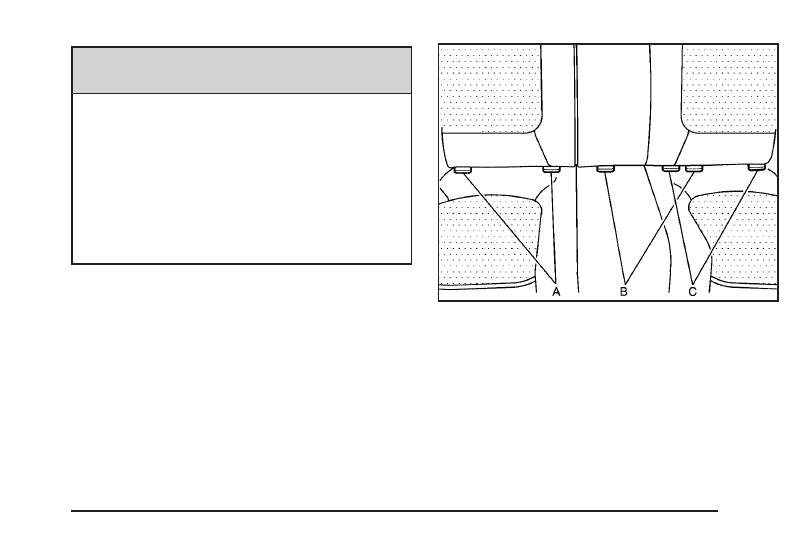Pontiac Torrent (2006 year). Manual - part 4

{
CAUTION:
Each top tether anchor and lower anchor in
the vehicle is designed to hold only one child
restraint. Attaching more than one child
restraint to a single anchor could cause the
anchor or attachment to come loose or even
break during a crash. A child or others could
be injured if this happens. To help prevent
injury to people and damage to your vehicle,
attach only one child restraint per anchor.
A. Passenger’s Side Rear
Seat Lower Anchors
B. Center Rear Seat
Lower Anchors
C. Driver’s Side Rear
Seat Lower Anchors
Make sure to attach the child restraint at the proper
anchor location.
1-45